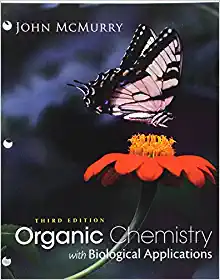Answered step by step
Verified Expert Solution
Question
1 Approved Answer
please answer all highlighted questions neatly. 1. Measure 0.6mL of Conc. Sulfuric acid (Caution!!) in a graduated test tube and transferred to a large test-tube.
please answer all highlighted questions neatly. 
1. Measure 0.6mL of Conc. Sulfuric acid (Caution!!) in a graduated test tube and transferred to a large test-tube. All apparatus used in this reaction should be dry (water free). Why we have to use dry glassware in this reaction?, 3099 2. Tare the tube with acid and add approximately 0.3g of methyl benzoate (liquid) in to it. Mix well with a thin glass rod. Could you write what happens when sulfuric acid reacts reacted with ester? Whys this step is important? Any Resonance structures? 3. Measure 0.2mL of Conc. Nitric acid in a graduated test tube (use the same one from step 1). Add 0.2mL of Conc. Sulfuric acid to it (Caution!!!). Mix well with glass rod. The reaction is electrophilic aromatic substitution reaction. Identify the electrophile and nucleophile in this reaction. Nitronium ion coming from nitric acid, then what is the role of sulfuric acid? Why nitronium ion is going to 3rd carbon from the ester? 4. Add the acid mixture (step 3) to the test tube containing ester (step 2) in drops using a dry pipette, while mixing the reaction with glass rod. Exothermic reaction (you will feel the test tube heating up slightly, means reaction is proceeding). 5. Once the dropwise addition of acid mixture and stirring is complete, let the reaction sit at room temperature for 20min. while occasionally stirring the reaction mixture with glass rod. This a multistep reaction. Which step is the rate determining step? Is ester group on the starting material is an electron withdrawing group (EWG) or an electron donating group (EDG)? Could you name a few EDG's and EWG's? How the presence of a particular group (EDG or EWG) on benzene ring affect the type of product formed? 6. Pour the reaction mixture in to a small beaker containing approximately 2.5g of ice. 7. Once you see light yellow solid, isolate them using vacuum filtration. 8. Rinse the reaction test tube with ice cold water and use this to wash the product. 9. Let the solid dry over the weekend in your drawer. Your starting material is colorless and liquid while product is slightly yellow and solid. Explain. 10. Weigh the material, find the yield of the product, and calculate the % Yield. % Yield = mols of the product/ mols of the starting material (limiting reagent) 11. Save a small amount of the product for IR. The rest is weighed and recrystallized from equal weight of methanol (the product is highly soluble in methanol!). Calculate the % recovery. 12. Analyze the starting material and product using IR spectroscopy 
Step by Step Solution
There are 3 Steps involved in it
Step: 1

Get Instant Access to Expert-Tailored Solutions
See step-by-step solutions with expert insights and AI powered tools for academic success
Step: 2

Step: 3

Ace Your Homework with AI
Get the answers you need in no time with our AI-driven, step-by-step assistance
Get Started


